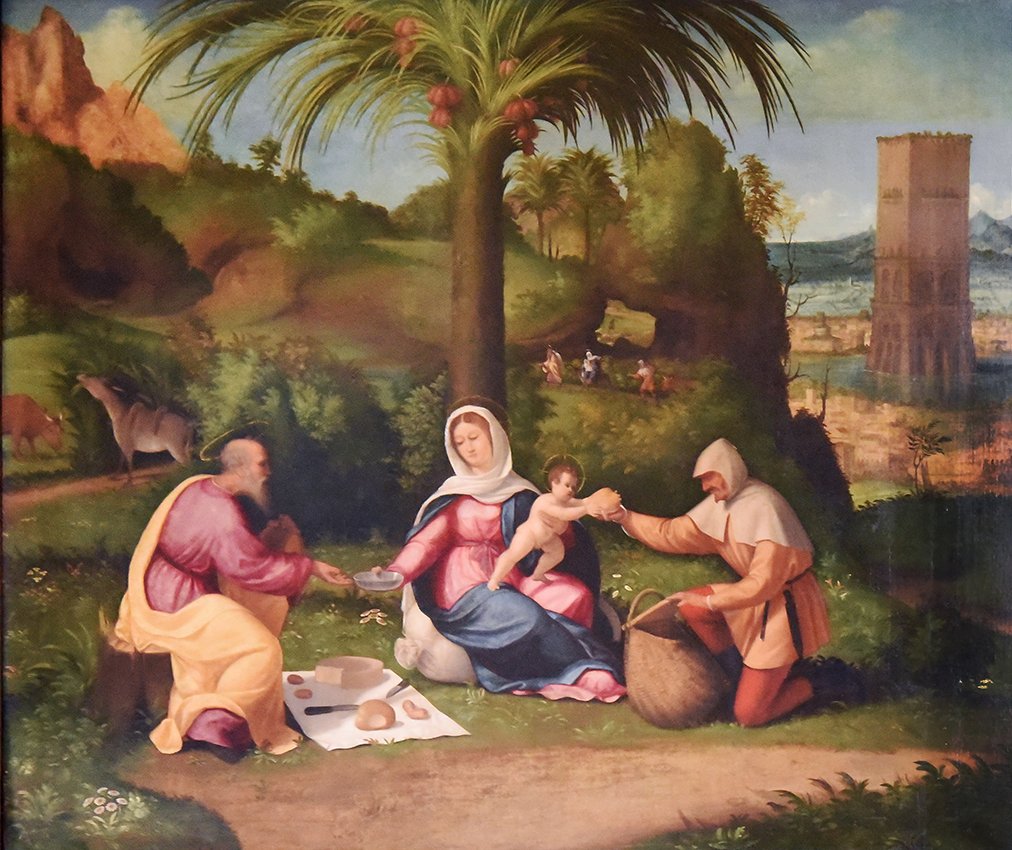
The Rest on the Flight Into Egypt
fl.1502-d.1528
Oil on canvas, 46 ins by 55 3/4 ins
Collection Details
Lent by Sir Henry Howarth to the 1912 exhibition and included in his sale, Christie’s, 14 December 1923, lot 129: bt by Sampson: sold anonymously, Lucerne, 8 September 1924, lot 88; sold anonymously, Christie’s, 1 May 1925, lot 99: buyer’s name illegible in auctioneer’s copy of catalogue; published in Belvedere (infra), 1929, as owned by Dr W Schlüter, Dortmund; Dr Benedikt, Berlin; G M Richter, from whom bought by Agnew, 1937, and sold to Lord Faringdon in 1946.
Literature
LIT: Crowe and Cavalcaselle, Painting in North Italy, ed Borenius, 1912, I, p. 286; W Suida, ‘Die Ruhe auf der Flucht … von Previtali’, Belvedere, viii, 1929, pp.108–9; Berenson, Italian Pictures, 1932, p.473; Berenson, Venetian School, 1957, i, p.148 (as autograph); F Heinemann, Giovanni Bellini e i Belliniani, 1959, No. s.328i (accepting attribution and dating it to c.1510).
Exhibition Details
BFAC, Early Venetian Art, 1912, No.49a; Agnew, London, 1938, No.42.
Related Picture
A similar, but much smaller, painting, with a different setting, is or was in a private collection in Milan (Heinemann, No. s.328ii and fig.510, dated by him to c.1523); a version with a similar group of the Holy Family was sold anonymously, Sotheby’s, 18 February 1953, lot 139.
Background
The artist has here included some of the picturesque incidents associated with the escape of the Holy Family, but not often depicted; cf Gospel of Pseudo-Matthew, (Liber de Infantia), XX-XXIII. The servant is one of the band of brigands who had attacked the Holy Family in a forest. Moved by their plight, he took them under his protection and escorted them on their journey – as is shown in the background to the right of the palm – later being crucified with Jesus as the good robber. The palm tree alludes to the miracle whereby, at Jesus’s bidding, it lowered its branches of dates for the Virgin as she rested beneath it. According to the Golden Legend, the ox as well as the ass sometimes accompanied the Holy Family.
For the identification of the tower in the background, which in view of the unusually detailed interpretation of the event is likely to have some significance (particularly in view of its omission from the Milan version), the compiler is indebted to Miss Heimann of the Warburg Institute. This, she suggests, is the Tower of David, a symbol of the Virgin, found in late medieval representations of the Hortus Conclusus, and in later illustrations of the paragons of the Virgin in the Loretan Litany.
The Trustees of the Faringdon Collection 25.
All rights reserved.
